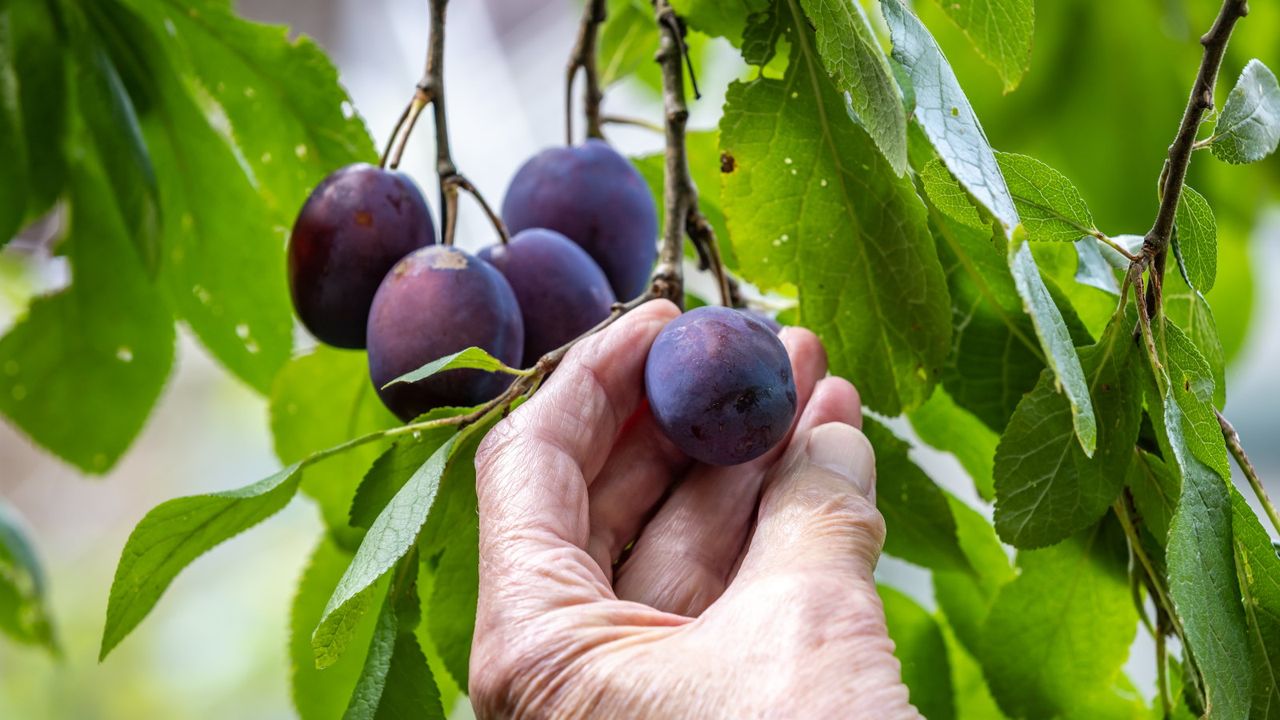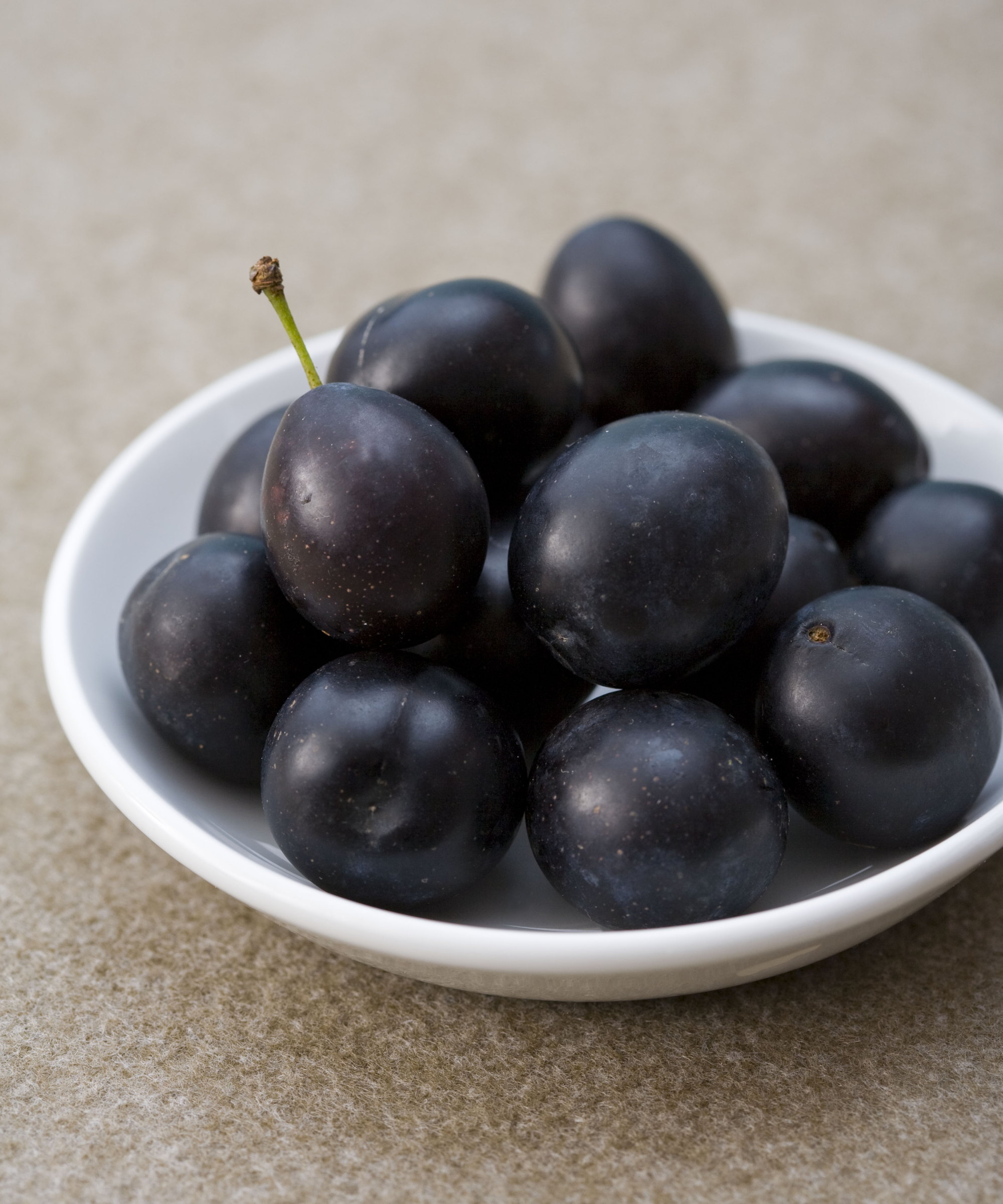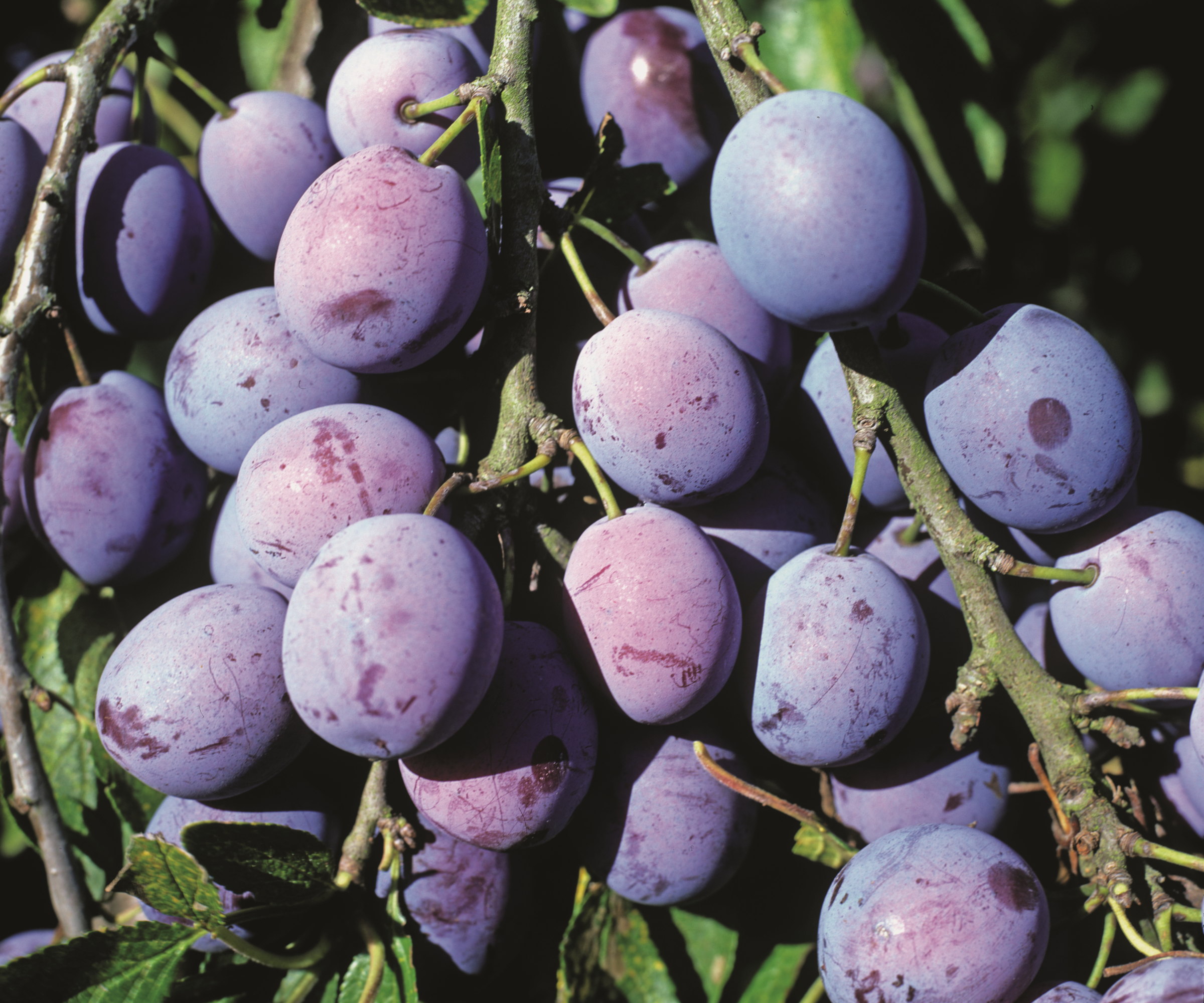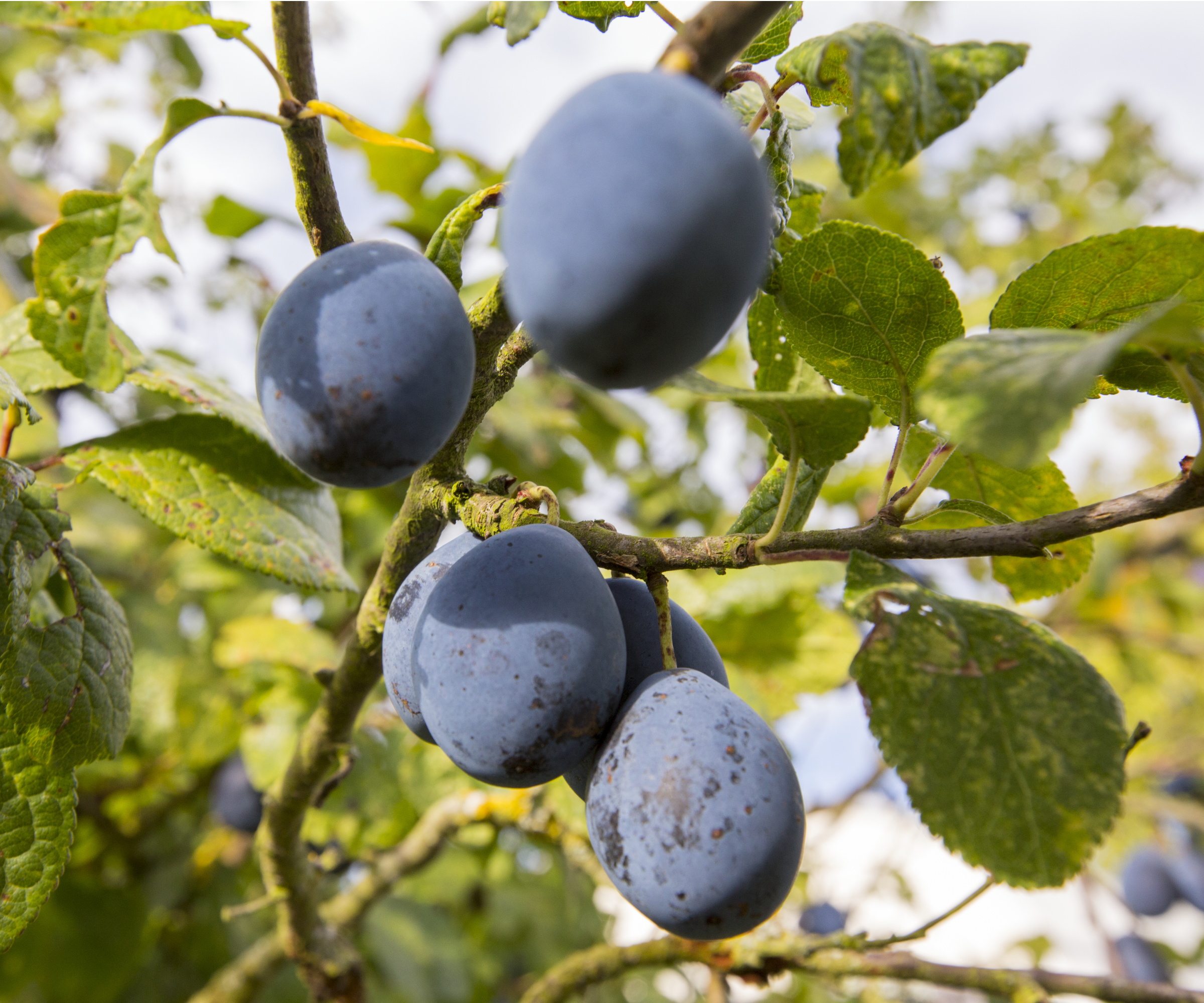
Damsons are lovely fruit trees that produce many dark blue fruits in late summer and also offer white blossom in spring. These historic fruit trees have been cultivated and harvested for centuries. They are simple to grow and still provide many benefits to anyone wanting to cultivate homegrown fruit today.
The damson fruits themselves are smaller and harder than other plums. While not so suitable for enjoying straight off the tree, damsons are ideal for using in the kitchen, making jams or jellies, or turning into liqueurs.
If you are looking for simple, versatile, and tasty fruit to grow at home, then damsons, while maybe not the first fruit tree you think of, tick all those boxes. I looked after damson trees in a walled garden while working as a professional gardener, and have spoken to a fruit tree expert for some extra growing tips. So, let's look in depth at how to grow a damson tree, including where best to plant the tree and lots of care tips to help you get great harvests.

How to grow a damson tree – an expert guide
Damsons (Prunus insititia) are related to plum trees, but the fruits are small and not as sweet as most traditional types of plum trees. The purple fruits have been popular for centuries and can be used in various ways.
Sheryl Normandeau, experienced gardener and co-author of 'The Prairie Gardeners' Go-To for Fruit', claims that damsons 'make the most scrumptious jam' and is a big fan of the fruit trees.
‘I would absolutely recommend growing a damson tree,’ says the fruit expert. 'Damson trees are reliable producers of large harvests of delicious small fruit. As they are self-fertile, you only need one tree to get that bountiful fruit, making them a good choice for a small yard.'
When and where to plant a damson tree

Damson trees can be planted throughout the year. However, the ideal time to plant fruit trees is in late winter or early spring.
Bare-root fruit trees are available during the dormancy period to add to your backyard ideas, while container-grown damson trees can be sourced year-round. Planting in late spring or summer will require a high degree of watering to help the tree get established.
There are many varieties of damson trees to consider planting, which are grafted onto different rootstocks to control their size. Full-size damson trees can reach 15-20 feet tall, while trees grafted onto dwarfing rootstocks may only get to around six feet.
Damson trees do like space and to grow in the ground, but you can grow smaller varieties of the fruit tree in pots in smaller backyards. Damsons are also suitable for training against a wall or fence as a fan, cordon, or espalier fruit tree to get large harvests in more confined spaces.
As for where to grow a damson tree, they are hardy enough to grow year-round in US hardiness zones 5-7, as some varieties can tolerate temperatures as low as 14°F. Always check that any type is suitable for your climate before going shopping.
'Damson trees are adaptable to both part shade and full sun,' says Sheryl Normandeau. 'They are relatively drought-tolerant once established, and prefer well-drained soil amended with compost in the spring.'
An ideal spot to grow a damson tree would have six to eight hours of daily sunlight and a fertile, well-draining soil type. As referenced by Sheryl, amending the soil before planting with organic matter, such as compost, well-rotted manure, or leaf mold, will help improve the soil structure, fertility, and moisture-holding capacity.
To plant the fruit tree, dig a hole large enough to accommodate the rootball and position it level with the ground. Ensure the graft union is 2-3 inches above the soil line, then fill the hole with soil, gently pressing it around the roots to eliminate any air pockets.
Stake the tree after planting and carefully tie it to the support, then give it a thorough deep watering. Use soft ties, such as these stretchy and extra-wide tree ties at Amazon.
How to grow a damson tree – care tips

- Watering - Damson trees want regular watering after planting, for their first season in their new home. Take time to water plants throughout that first summer, and use a soil moisture meter (such as this soil moisture meter at Amazon) to get quick judgments of the water levels in the ground. Once established, watering during dry spells will help your damson tree to fruit. A lack of moisture can cause trees to shed their fruits. Mulching around trees with organic matter such as compost, leaf mold, straw, or woodchips will help to retain moisture in the soil and smother weeds.
- Feeding - A regular fertilizing schedule is beneficial when you grow a damson tree. Fertilize fruit trees annually in late winter using a balanced product. Scatter the granular product around the base of the tree and water it in well. Damsons in pots require feeding with a liquid feed high in potassium every few weeks during spring and summer. This will aid the production of fruit.
- Pruning - There is one major fruit tree pruning mistake to avoid with damson trees, and that is trimming them in winter. Understanding when to prune fruit trees means you keep them healthy. While you prune many fruit trees in winter, damson trees, like plums and other stone fruits, do not want to be trimmed when dormant. This leaves them susceptible to diseases, such as silver leaf. 'Mature trees can be pruned in late spring through early fall,' says Sheryl Normandeau. 'Damson trees less than three years old may be pruned to shape in spring.'
- Harvesting - 'Healthy established damson trees produce abundant fruit and, like apples, will naturally drop some of the fruit (usually in June) to help lighten the load,' adds Sheryl. 'You can help out by thinning the fruit. Remove one fruit every two to three inches on the branch.' Damsons ripen in late summer to early fall, and the fruits ripen at different times, so they need regular checking. Ripe fruits will have a deep blue color and feel slightly soft when squeezed. The fruits should come off the tree easily; if they don’t detach, then leave them to develop. Finally, be careful when picking damsons as they bruise easily.
This organic fruit tree fertilizer can be used at the time of planting, and to feed fruit trees annually in spring.
A digging spade with a carbon steel blade and reinforced fiberglass handle for planting fruit trees into any soil type.
These pruning shears are made of Japanese-grade, high-carbon steel and can be used to do small-scale fruit tree pruning.
FAQs
Can I grow a damson tree from a stone?
You can grow a damson tree from a stone, but it comes with a degree of risk. Propagating the fruit tree from stones takes many years to produce fruit, and it will be a different fruit from the original type of plum. If you wish to attempt this experiment, similar to when you grow a plum tree from a plum, wash the stone and let it dry out before planting it in a pot filled with well-drained soil.
How long do damson trees take to fruit?
A damson tree will take 3-5 years to produce fruit once it is established in its new home. If you grow a damson tree from a stone, the time to the first fruit increases to up to 15 years.
Are damsons poisonous to dogs?
The stones of damsons contain cyanogenic glycosides that can be toxic to dogs, especially if they are crunched and ingested.
Another historic and underrated fruit tree is the quince. These large and unique fruits do need cooking to make them edible, but they can be used in jellies, jams, pies, and other desserts.
Quince trees are low-maintenance and cold-hardy to -15°, which makes them great options for many backyards. To discover more, see our focused guide on how to grow quince trees for expert tips on planting and maintaining these distinctive trees.







